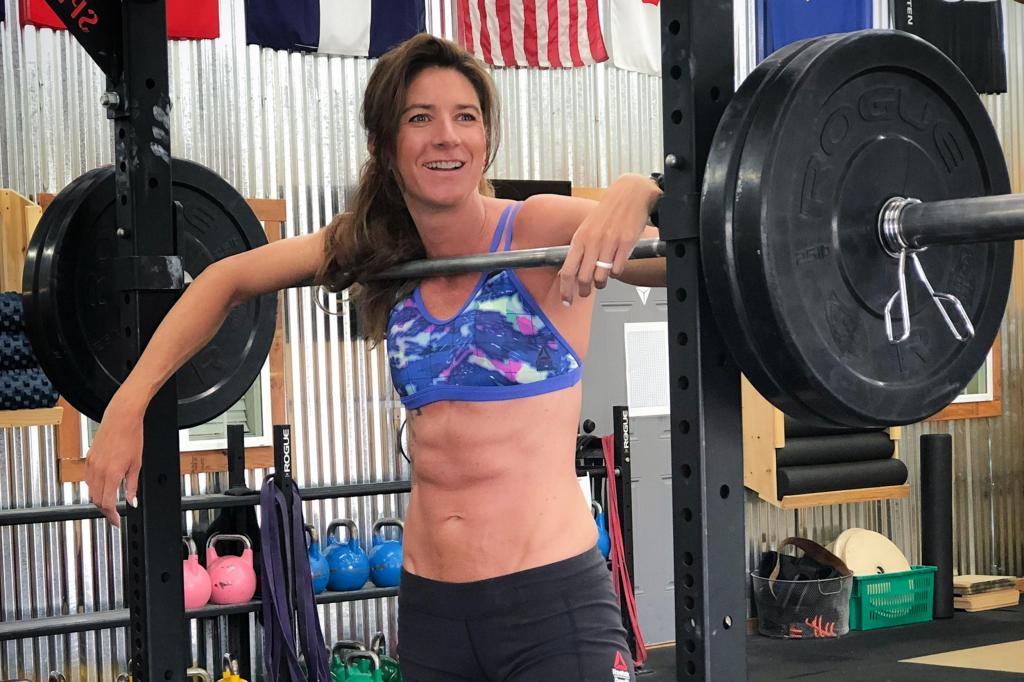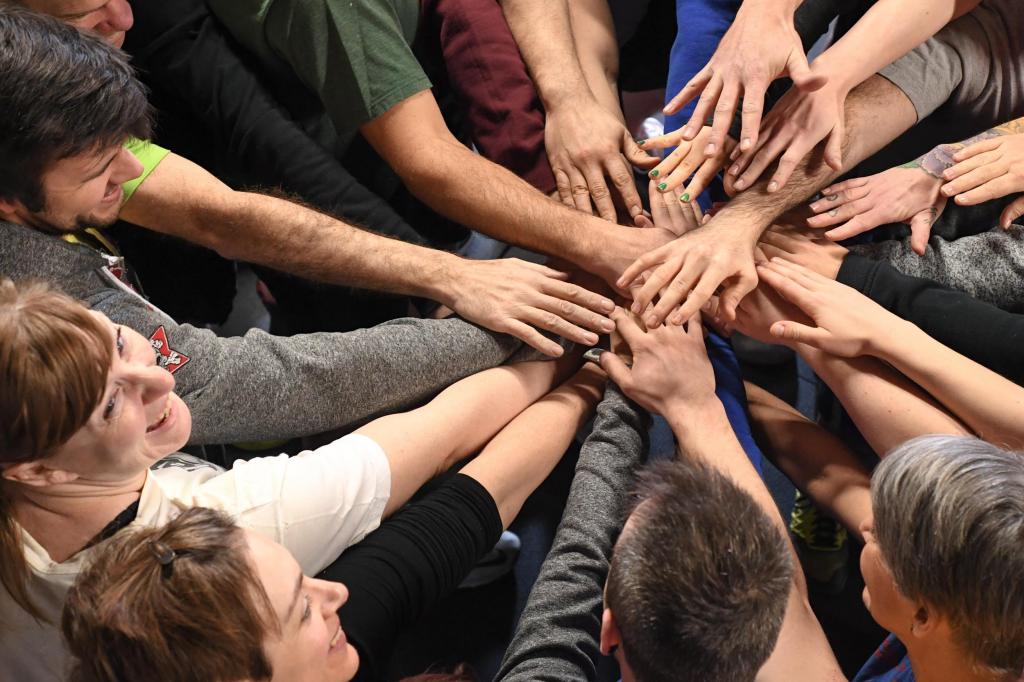November 1st, 2018
The secret to good nutrition is establishing healthy habits you can follow for the long haul—not for weeks or months but for the rest of your life.
Becky Harsh—CrossFit Inc. Seminar Staff trainer, Certified CrossFit Coach (CF-L4) and owner of CrossFit Beaver Menace in Castle Rock, Colorado—provides one-on-one nutrition coaching. Over the years, Harsh has noticed that those who find long-term success share a similar approach. The people who meet—and exceed—their goals share five essential qualities that have nothing to do with eliminating certain foods or eating at specific times during the day.
If you’ve been struggling to stick with a nutrition plan, consider these five habits of highly successful eaters.
 Goals may vary, but the path to achieving them looks quite similar for Becky Harsh's most successful nutrition clients. (Courtesy of Becky Harsh)
Goals may vary, but the path to achieving them looks quite similar for Becky Harsh's most successful nutrition clients. (Courtesy of Becky Harsh)1. Seek Help
Changing the way you eat is a major undertaking, not something to approach halfheartedly.
Harsh says those who get the best results seek help for themselves—as opposed to someone who signs up for a nutrition challenge because a friend talked him or her into it.
“In the long run, they are not going to be as successful as somebody that searches me out and says, ‘Hey, I’m ready to take it to the next level. Can you help me?’”
If you’re not committed to the process, it’s almost impossible to make healthy decisions at every meal. The motivation to improve your diet must come from within, not from a friend, coworker or relative.
2. Focus on Health and Performance
Which is more motivating: looking good in a bathing suit or improving your health and performance? As much as we think we’re motivated by looking good, the subjective nature of aesthetic goals means it’s difficult to evaluate—or even recognize—progress.
Harsh said people who are solely focused on aesthetic goals are rarely satisfied.
“They are almost too close to the problem and lose sight of when things are actually changing and getting better,” Harsh said.
Even before and after pictures don’t work, she said, because clients’ eyes immediately go to what they consider problem areas. She tries to tell these clients how much better they look, and they often reply, “No, I don’t.”
“It’s very hard to actually reach any goal if it’s truly aesthetic based,” Harsh said.
“When it becomes too much about aesthetics, it’s too subjective for them,” she continued, “and we are always our own worst critic regarding something like that.”
If the goal is improved health and performance, Harsh said her clients can look at blood markers and gym numbers to see evidence of success. Have their blood-sugar levels gone down? Are they running faster and lifting heavier? Harsh finds it much easier to motivate people to achieve long-term success with performance or health goals.
3. Log Your Intake
“I can’t stress enough the importance of actually tracking your intake,” Harsh said.
Daily logging, she explained, helps take the emotion out of eating and puts the focus on data. When clients track nutrition, it’s easy for Harsh to help them make connections between what they eat and how they perform.
“‘I eat this, and this is how I perform’ or ‘I eat this much and this is what I look like,’” Harsh said her clients realize.
“(People who) track the data behind those things are able to actually see success in the long term because they can change what they consume to meet their goals, versus just ‘I’m gonna eat better,’” Harsh said. “There’s nothing to hold on to there.”
Harsh believes recording intake is more important than following a specific nutrition plan or philosophy.
“I don’t actually care what plan you seem to be on, but if you are tracking the amount of food that goes into your body, and you know those things, then you actually have the information you need to be successful long term. If you aren’t tracking, then it’s all just a guess.”
 Log your food and approach nutrition like a science experiment, not a guessing game. (Mike Warkentin/CrossFit Journal)
Log your food and approach nutrition like a science experiment, not a guessing game. (Mike Warkentin/CrossFit Journal)4. Make a Long-Term Commitment
A healthy diet is a lifelong pursuit, and Harsh said people who find success share a commitment to the process and an understanding of the time it will take.
“It truly is that days turn into weeks turn into months turn into years,” Harsh said. Those who look at their diets as a 12-week experience won’t get the results they want.
“It’s simply a journey—just like fitness is, just like health is. It has to keep going. … It’s one foot in front of the other, every day, making good choices, and when you make choices that aren’t in line with your goals, (it’s) understanding that tomorrow is another day,” Harsh said.
She recommends following the 80/20 rule: sticking to your nutrition plan 80 percent of the time and indulging in foods not on the plan 20 percent of the time. This approach makes room for social events and treats and helps people avoid feeling deprived.
“I think 80/20 is a really great place to live, where 80 percent of the time you are crushing it and 20 percent of the time you have to go out to dinner because you are taking your kids to sporting events and you weren’t able to pack your food,” she said.
Too much restriction often leads to rebellion and isn’t realistic in the long term. Logging your food can help you keep the 20 percent in check so it doesn’t creep up to 30, 40 or 50 percent.
 You don't have to go it alone—fitness and food are best served with friends. (Mike Warkentin/CrossFit Journal)
You don't have to go it alone—fitness and food are best served with friends. (Mike Warkentin/CrossFit Journal)5. Find a Community of Support
Sticking to healthy habits is much easier with a support system. If you’re surrounded by people who drink soda and eat fast food, it’s difficult to forge your own healthy path.
Even Harsh uses a nutrition coach to keep herself accountable.
“It sounds silly because I’m so passionate about this stuff, but I struggle like anybody else,” she said.
Even a supportive partner or gym friend can provide accountability and encouragement.
“If you set yourself up around like-minded people, then—no matter what—when things get rough, you are going to have a little extra help,” Harsh said.
About the Author: Hilary Achauer is a freelance writer and editor specializing in health and wellness content. In addition to writing articles, online content, blogs and newsletters, Hilary writes for the CrossFit Journal. To contact her, visit hilaryachauer.com.
Cover image: Mike Warkentin/CrossFit Journal


Smm Panel
ReplyDeletesmm panel
Https://isilanlariblog.com/
instagram takipçi satın al
hirdavatciburada.com
Www.beyazesyateknikservisi.com.tr
Servis
jeton hilesi